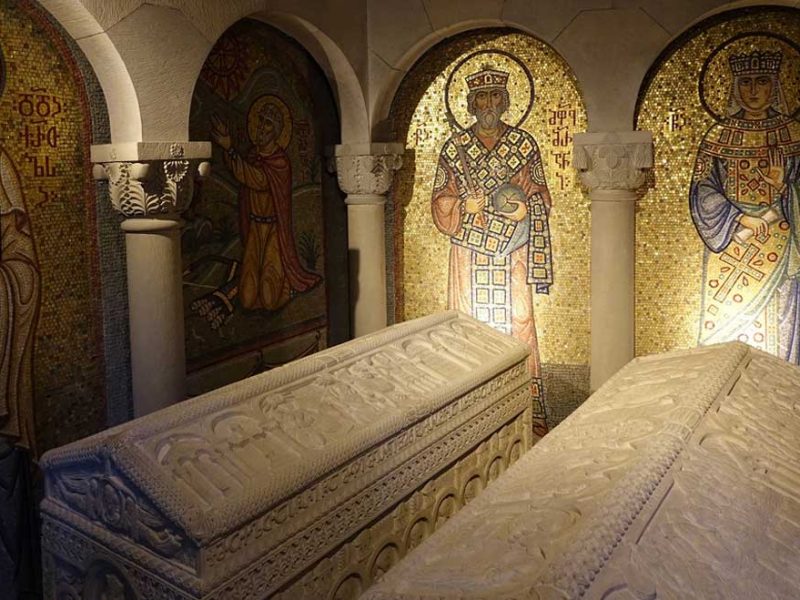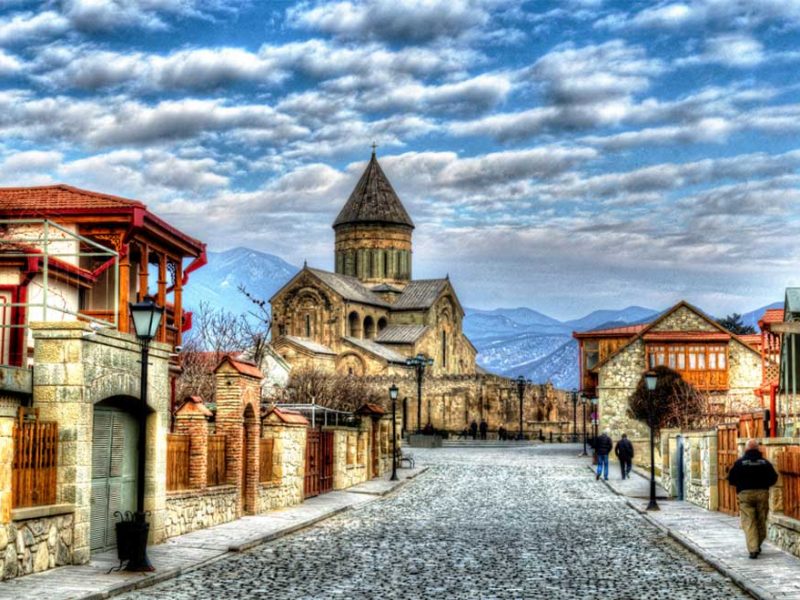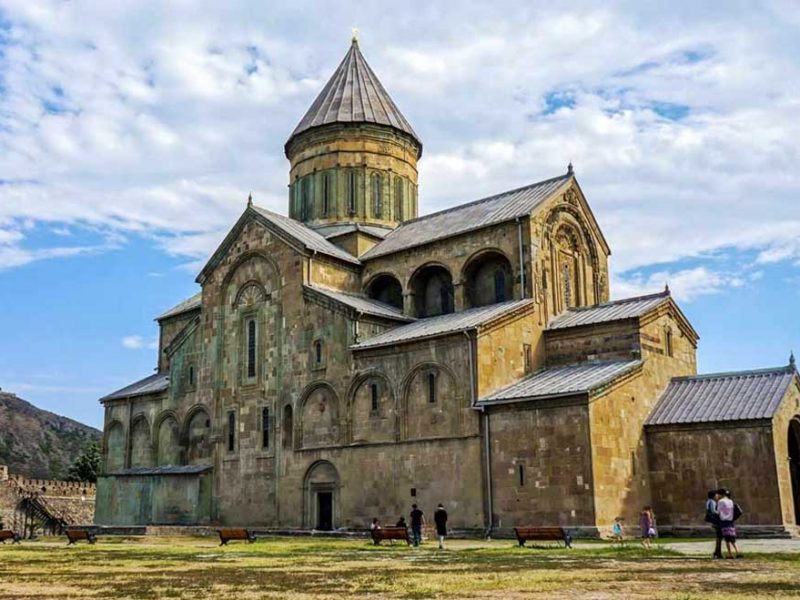Get In touch
If you would like to request more information, please let us know from the contact page
You will be soon contacted by our staff.
Phones: 995 577 191815, 995 596 191911, 995 599 909020
Tour Info – Price 75 EUROS
Duration: Full Day
Mtskheta one of the oldest cities of the country (in Kartli province of Eastern Georgia), is located approximately 20 kilometres (12miles) north of Tbilisi at the confluence of the Aragvi and Mtkvari rivers. Mtskheta one of the oldest continuously inhabited cities in the world. The city (population 19 423) is now the administrative center of the Mtskheta-Mtianeti region. Due to its historical significance and numerous ancient monuments, the „Historical Monuments of Mtskheta“ became UNESCO World Heritage Site in 1994. Mtskheta was capital of the early Georgian Kingdom of Iberia during the 3rd century BC- 5th century AD. It was a site of early Christian activity, and the location where Christianity was proclaimed the state religion of Kartli in 337. Mtskheta still remains the headquarters of the Georgian Orthodox Church.
King Dachi Ujarmeli (beginning of the 6th century AD), who was the successor of Vakhtang I Gorgasali, moved the capital from Mtskheta to the more easily defensible Tbilisi according to the will left by his father. However, Mtskheta continued to serve as the coronation and burial place for most kings of Georgia until the end of the kingdom in the 19th century.
Svetitskhoveli Cathedral (11th century) and Jvari Monastery (6th century) in Mtskheta are amongst the most significant monuments of Georgian Christian architecture, and are historically significant in the development of medieval architecture throughout the Caucasus.
In the outskirts of Mtskheta are the ruins of Armaztsikhe fortress (3td century BC), the Armaztsikhe acropolis (dating to the late 1st millennium BC), remains of a „Pompey’s bridge“ (according to legends built by Roman Legionnaires of Pompey the Great in 1st century BC), the fragmentary remains of a royal palace (1st-3rd century AD), a nearby tomb of the 1st century AD, a small church of the 4th century, the Samtavro Monastery (11th century), and the fortress of Bebris Tsikhe (14th century).
In 2014, by the decision of Catholicos-Patriarch of all Georgia, Illia II, Mtskheta was given a status of Holy Town. This decision was based on the will left by Catholicos Melkizedek I, written in 11th century.
Prices and Additional Info:
Tour for 4-7 people – 75 euros each person;
Tour for 8 and more people – 65 euros each person;
Note: 20% discount for children from 3 to 12 year old. Babies are free from tax (from 1 to 2 year old).
Tour can be organised with either Sedan or SUV types of vehicle;
Tour includes: transportation, driver/guide service.
Tour Program
Svetitskhoveli Cathedral
Svetitskoveli Cathedral is located in the centre of the town. It’s a unique, 11th century monument of Georgian architecture and is among the four greatest Georgian cathedrals, the other three being Oshki, Bagrati and Alaverdi. Svetitskoveli is known as the burial site of Christ’s mantle and the coat of Saint Elijah the Prophet.
Svetitskoveli is the largest surviving historical church in Georgia. For many centuries, it represented the religious centre of Georgian Christianity, in the 4th century, following St. Nino’s advice, Mirian III, the King of Kartli, built a small temple here, but it did not survive to this day.
In the 11th century, Melkisedek, the Catholicos of Kartli, built a new temple on the spot where the damaged basilica stood. Constantine Arsukidze was completed in 1029.
According to the legend the architect proved better than his teacher and also felt in love with king Ciorgis favourite lady and he was punished by cutting his arm. The legend is controversial as Arsukidze was rebuilt in the 15th century.
Samtavro Monastery
Samtavro is an Episcopal church in Mtskheta that was built in the second half of 11th century.
In Georgian historical sources (Conversion of Kartli and life of Georgian Kings), it is mentioned as „suburban church“ or “higher church“ (as opposed to Svetitskhoveli, which is located on lower ground).
In 420s and 430s, Svetitskhoveli, built by Mirian III, was destroyed and Archbishop Iona transferred his seat to the “higher church“; this was when it was renamed Samtavro (from Georgian „mtavari“, which stands for main or principal).
Shiomgvime Monastery
Shiomgvime is one of the most important monasteries of early feudal period.
It is located in Mtskheta Municipality, on the left bank of Mtkvari River. By the second part of the 6th century, one of the Syrian fathers, Shio, founded this church. As the historical sources say, Shio spent last days of his life in a cave and when he died, he was, according to his will, buried in that same cave, hance the name of the monastery – Shios Mgvime stands for The Cave of Shio. His grave, located inside the monastery, is considered a holy place.
Jvari (Holy Cross) Monastery
Jvari Monastery is 6th century monument, built on the eastern side of Mtskheta, close to the confluence of Mtkvari and Aragvi rivers, on the top of a rocky mountain. It is listed among the UNESCO World Heritage sites.
The name of the monastery has a historical basis. In 330s AD, after Georgia’s conversion to Christianity, King Mirian III erected a cross on top of a mountain, which was later revered by not only Georgians, but other people of the Caucasus too. By the end of the 6th and the beginning of 7th century, Prince Stepanoz I, son of Guaram, rallied his brothers Demetrius and Adarnase as well as other representatives of the principality to build a temple around the cross (the original pedestal on which it stood is still preserved in the monastery).





